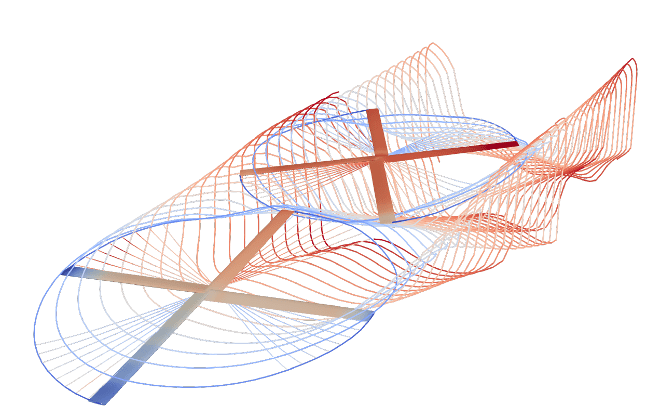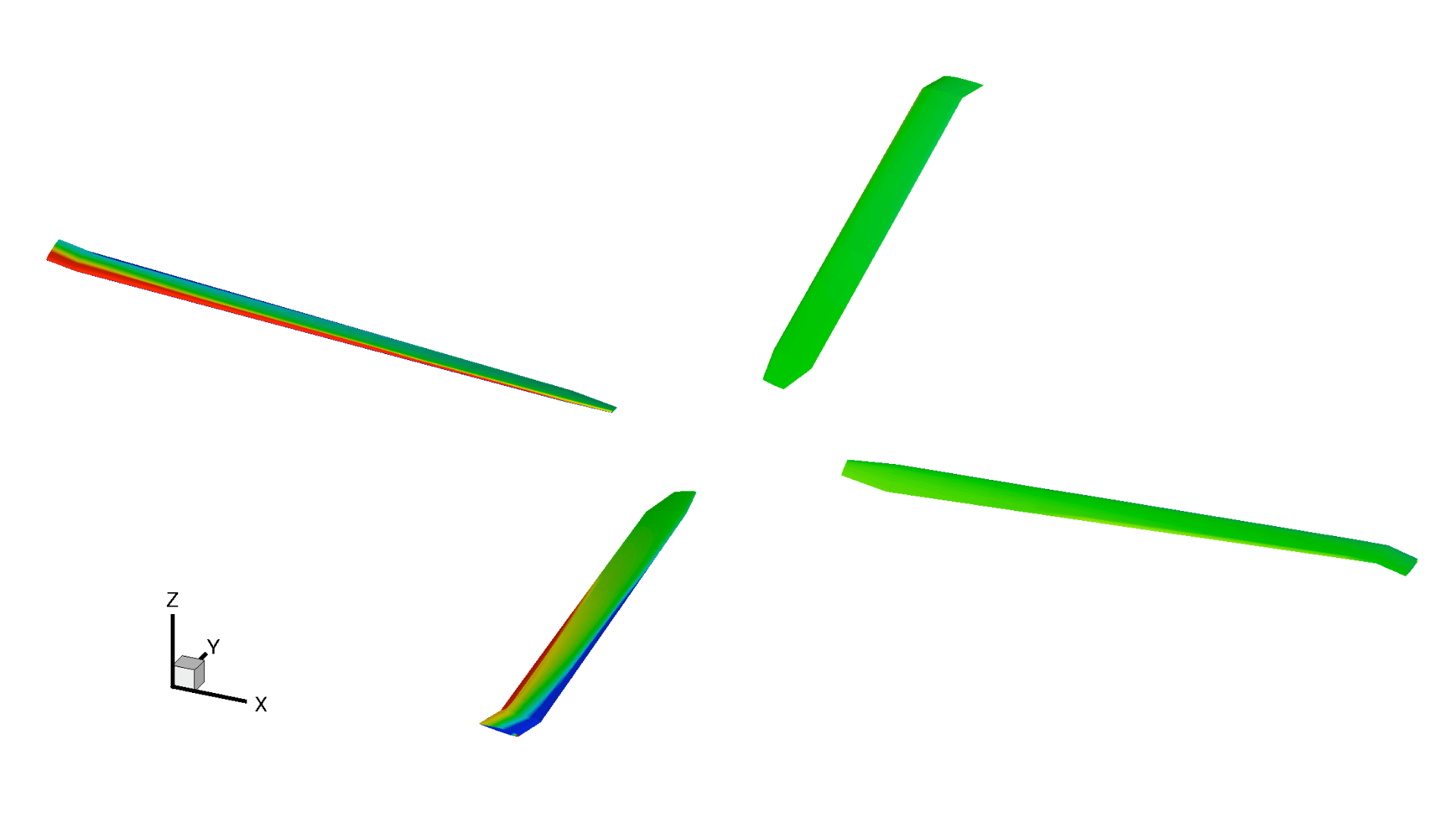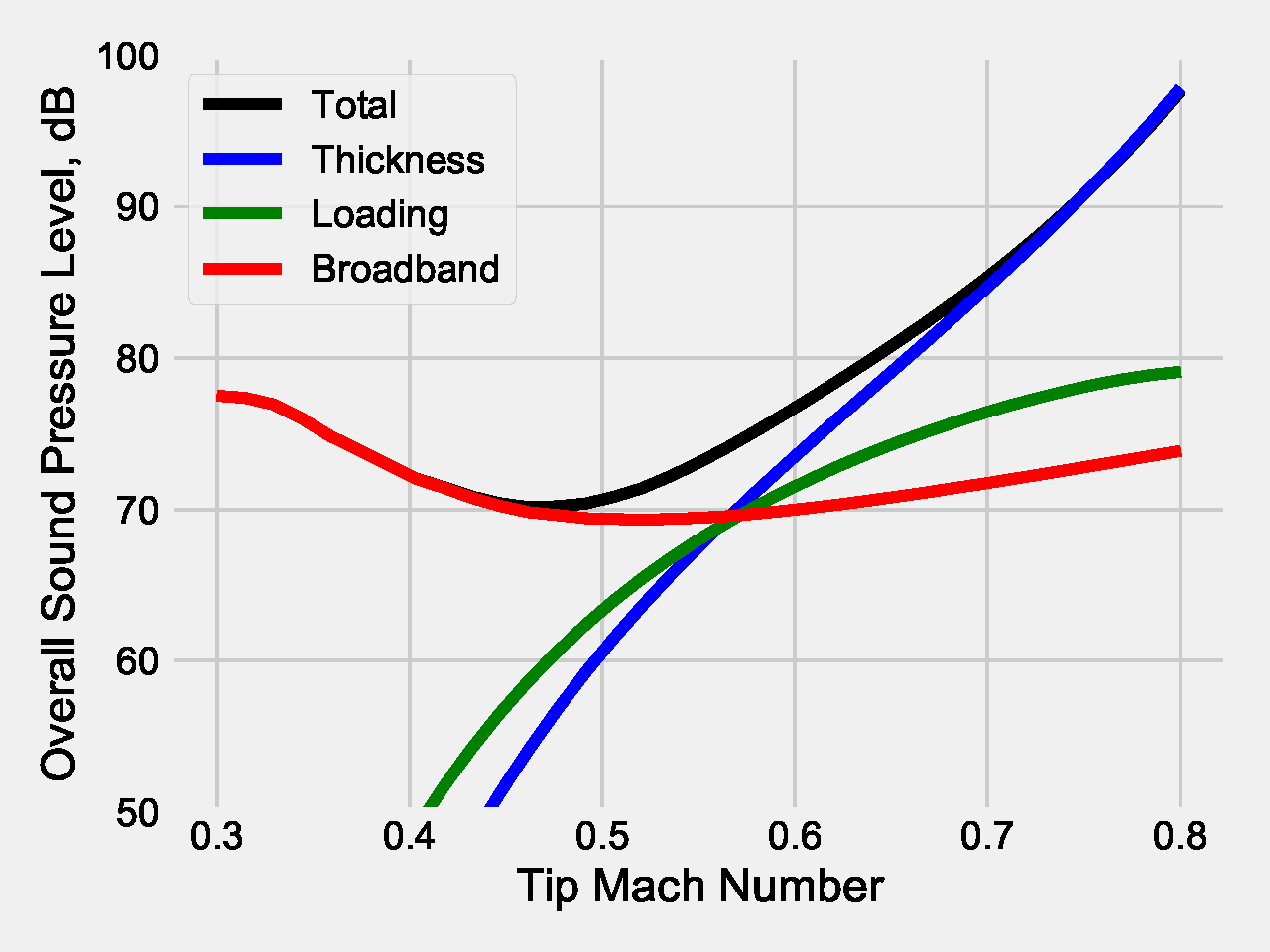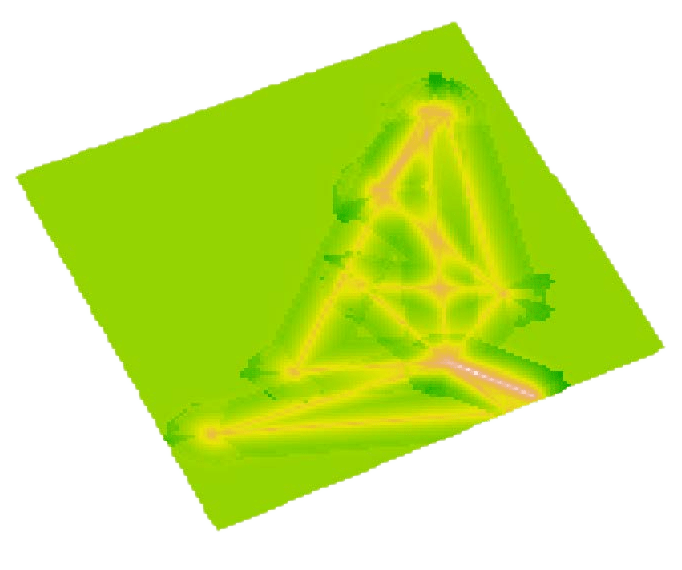This page describes various software tools developed at Penn State for analyzing the aerodynamics and acoustics of aircraft. Short descriptions of these tools are provided below, as well as information about how to obtain them.
OpenCOPTER
OpenCOPTER is a computationally-efficient model for multirotor interactional aerodynamics developed at Penn State. OpenCOPTER uses a physics-driven time dynamic inflow model to drive wake advection. This approach avoids the computational cost and numerical stability issues of conventional free vortex wake models, which are especially critical when operating at high space and time resolution for aeroacoustic predictions.
OpenCOPTER is free software. Source code can be obtained via OpenCOPTER Github repository. OpenCOPTER is structured as a library to allow it to be integrated into other software tools. The library can be dynamically-linked with other compiled programs. In addition, Python bindings are provided. A Python computational framework, OCFly, is also included in the repository as a practical example of a user code.
OpenCOPTER can output VTK files for visualization using Paraview. OpenCOPTER also couples with the PSU-WOPWOP aeroacoustic solver, described in the following section.
OpenCOPTER wake visualization for a tandem rotor system using Paraview.
Comparison of the measured and OpenCOPTER/PSU-WOPWOP predicted BVISPL noise contours for the HART II experiment.
Documentation for both the theory and the API is available here.
PSU-WOPWOP
PSU-WOPWOP is a general purpose aeroacoustics solver primarily developed by Prof. Kenneth S. Brentner and his students at Penn State. PSU-WOPWOP supports aeroacoustic predictions for arbitrary aerodynamic surface geometries and motions at varying levels of fidelity. These capabilities were initially developed to support the acoustic analysis of rotorcraft in maneuvering flight, but have since been applied to solve many other aeroacoustic problems. Tonal noise predictions are made using Farassat’s Formulation 1A of the Ffowcs Williams and Hawkings equation. Impermeable and permeable acoustic data surfaces are supported, as well as compact line source methods. Pressure gradient formulations are also supported to enable coupling with acoustic scattering codes.
PSU-WOPWOP includes models for broadband noise prediction, including the empirical Pegg rotor noise model and the semiempirical Brooks, Pope, and Marcolini airfoil self noise model. PSU-WOPWOP couples with a variety of aerodynamic solvers developed at Penn State and elsewhere. PSU-WOPWOP is also included with the CHARM rotorcraft aeromechanics code developed by Continuum Dynamics Inc.
Example PSU-WOPWOP source-time constant surface with acoustic data displayed. (From PSU-WOPWOP 3.5.0 manual)
A package including executable code, test cases, and the manual may be obtained at no cost from Prof. Kenneth S. Brentner. Versions of PSU-WOPWOP are provided for Windows, Linux, and MacOS systems.
VSP2WOPWOP
VSP2WOPWOP is a free software package written in Python to facilitate the rapid evaluation of rotor noise using NASA’s OpenVSP software to define rotor geometries and PSU-WOPWOP to predict the resulting noise. VSP2WOPWOP reads in the rotor geometries defined in OpenVSP, uses simple blade-element methods to predict the airloads, and automatically generates the input files required by PSU-WOPWOP for both tonal and broadband noise predictions. Parameters sweeps of rotor operating conditions and geometries can be defined to allow acoustic design trades to be assessed.
Notional UAM rotor geometry modeled in OpenVSP (from Greenwood, Brentner, Rau and Gan).
VSP2WOPWOP predicted rotor noise source contributions from with tip Mach number (from Greenwood, Brentner, Rau and Gan).
Source code for VSP2WOPWOP can be obtained on Github.
WOPWOP2AAM
WOPWOP2AAM is a tool to automate the processing of PSU-WOPWOP predicted acoustic data into noise source spheres for use with the Advanced Acoustic Model (AAM) maintained by the Department of Transportation’s Volpe Center. The AAM noise source sphere data format is also used by the NICEOPS aircraft noise impact prediction tool developed at Penn State and described in the following section.
WOPWOP2AAM is free software and may be obtained from our Github repository. AAM may be requested from DOT Volpe by following the instructions on their page.
NICEOPS
NICEOPS (Noise Informed Community Environment Operations Planning System) is software for rapidly modeling the acoustic impact of aircraft operations using a noise source sphere approach coupled with a quasistatic acoustic mapping method to predict the noise of aircraft during moderate maneuvering flight conditions. NICEOPS supports a variety of noise metrics and can simulate single or multiple aircraft operations.
Day-Night Level (DNL) noise contours for simulated Dallas-Fort Worth area UAS operations predicted using NICEOPS, coupled with OpenCOPTER and PSU-WOPWOP for source noise prediction and Onesky’s Uncrewed Traffic Management platform.
NICEOPS is currently under development and is not yet ready for general release. Please contact Eric Greenwood (eric.greenwood@psu.edu) with any inquiries about using or participating in the development of the software.





